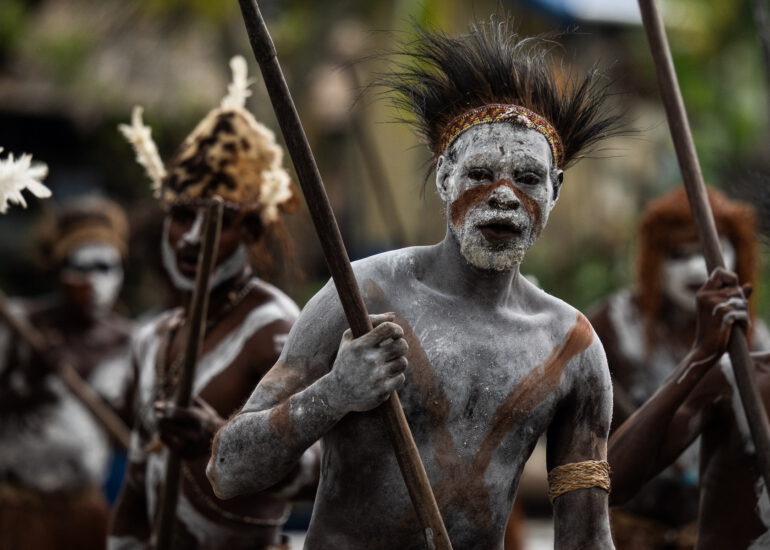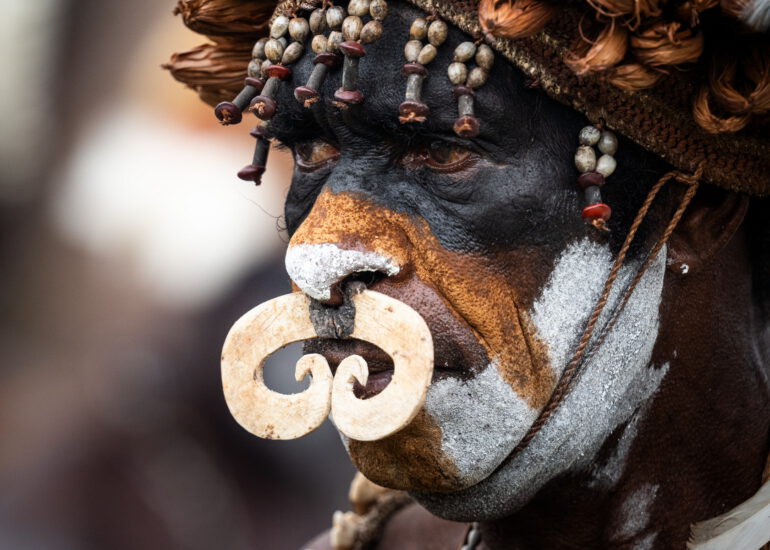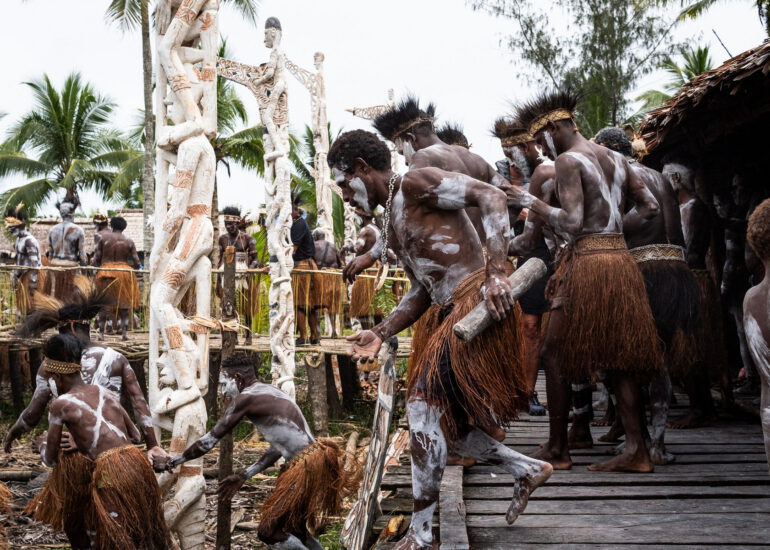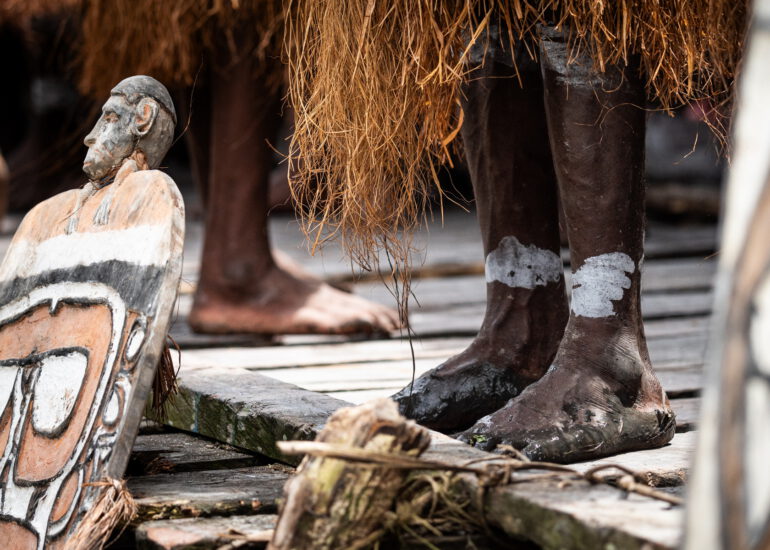Meeting the Asmat people: an unforgettable visit to the village of Per, Indonesia
Meeting the Asmat people: an unforgettable visit to the village of Per, Indonesia
On my last expedition, I had the privilege of visiting one of the most remote places in the world: the village of Per in Indonesia, home to the fascinating Asmat people.
When we arrived with the Zodiacs, we were already greeted by the impressive canoe warriors.
Their presence and the intensity of their gaze immediately left a lasting impression.
This first encounter with the Asmat people was the prelude to an unforgettable experience.
On arrival, we were allowed to take part in one of their traditional ceremonies.
It was a spectacle that took us back to a time long gone.
The drums, the dances, the chants – everything told the story of a people deeply connected to their roots and traditions.
It was an honor to witness this ceremony and it left me speechless at how impressive the Asmat culture is in its simplicity and power.
The village of Per is a place where time seems to stand still.
Only one or two expeditions a year have the opportunity to land here, which made our visit a particularly rare event.
Despite their remoteness, the people here were incredibly hospitable.
Their warmth and openness made me feel welcome, even though our worlds couldn’t be more different.
This hospitality made our time in the village even more valuable.
The culture and history of the Asmat
The Asmat are one of the best-known indigenous peoples of New Guinea, famous for their woodcarving art and their deeply rooted warrior tradition.
The art of the Asmat, in particular their Bis Pole (as the Asmat call the phael) and war shields, is known and appreciated worldwide.
Their works of art are not just aesthetic objects, but carry deep spiritual meanings linked to the worship of ancestors and the stories of the tribe.
Historically, the Asmat were feared as warriors and headhunters.
Their rituals and ceremonies reflect a world view in which death and life are closely linked.
The carvings that are often used in ceremonies depict ancestor figures that are supposed to accompany the transition to the afterlife.
During my visit to the village of Per, I had the unique opportunity to take two of my portraits in the so-called “Jew House” (also known as the Bachelor House).
This traditional building plays a central role in Asmat culture, as it is reserved exclusively for unmarried men and boys over the age of 10.
The Jew House serves not only as a place to live, but also as a cultural center where rituals, ceremonies and the passing on of knowledge take place.
Meeting the Asmat people was a journey into another world – a world in which traditions and customs are still alive and determine people’s lives.
The time I spent in the village of Per showed me how important it is to preserve and respect such cultures.
It was an expedition that I will not soon forget.
Comments are closed.



















































